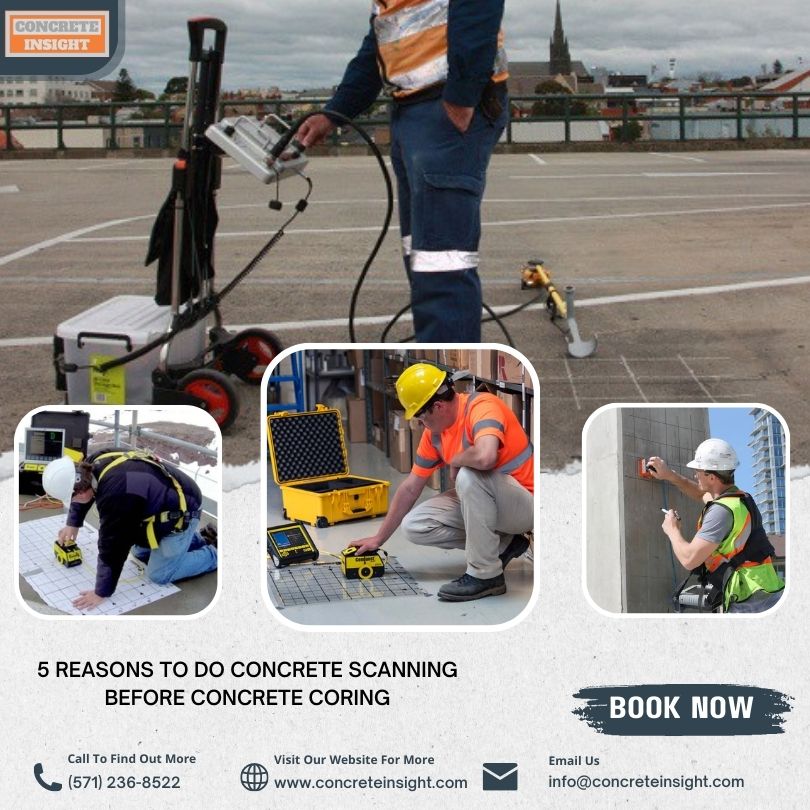Past the Surface: Leveraging Advanced Concrete Scanning Techniques for Unmatched Precision and Insight
Advanced concrete scanning techniques have actually arised as crucial devices in this pursuit, using a glimpse below the surface area to unveil a globe of essential understandings. By harnessing innovative technologies, experts can reveal abnormalities, examine the problem of concrete frameworks, and make educated decisions that form the program of jobs.
Relevance of Advanced Concrete Scanning
The importance of utilizing sophisticated concrete scanning strategies depends on the unequaled precision they provide for finding sub-surface anomalies and guaranteeing architectural honesty. By employing sophisticated technologies such as ground-penetrating radar (GPR), electro-magnetic induction, and progressed finder imaging, building and construction experts can delve below the surface of concrete structures with a level of accuracy that far surpasses traditional evaluation methods. Concrete Scanning. These techniques enable the identification of hidden hazards like rebar deterioration, gaps, avenues, or post-tension wires that can endanger the security and security of a structure with time
Moreover, progressed concrete scanning gives important insights into the overall condition of a concrete component without the need for intrusive actions, decreasing the threat of creating damage during the evaluation process. The capability to identify the precise location and deepness of possible problems enables targeted repair services and upkeep, eventually extending the life expectancy of the structure and enhancing its efficiency. Essentially, the relevance of sophisticated concrete scanning can not be overstated in the world of building and infrastructure upkeep, where precision and integrity are critical.
Kinds of Cutting-Edge Technologies

Anomalies and Problem Detection

Along with GPR, concrete scanning techniques like thermography and impact-echo testing are likewise reliable in discovering their explanation abnormalities and flaws. Thermography makes use of infrared modern technology to recognize variants in surface area temperature level, showing possible locations of concern such as delamination or moisture access. On the various other hand, impact-echo testing involves evaluating acoustic actions to discover spaces, fractures, and other problems within the concrete. By leveraging these sophisticated methods, experts can proactively attend to architectural problems, making sure the durability and security of concrete structures.
Assessing Concrete Problem
Exactly how can designers accurately examine the problem of concrete structures to ensure their durability and safety? Various sophisticated concrete scanning strategies are employed for this function. Ground-penetrating radar (GPR) is generally used to evaluate the interior framework of concrete, discovering gaps, splits, and other anomalies that may jeopardize its toughness.
Combining non-destructive screening approaches with aesthetic inspections allows for an extensive examination of concrete problem, enabling engineers to determine potential issues early on and execute timely maintenance or repair services. By leveraging these sophisticated strategies, designers can make go to this web-site sure the long-lasting toughness and security of concrete structures.
Enhancing Decision-Making Processes
In the realm of infrastructure management, optimizing decision-making processes is crucial for making sure the efficient upkeep and durability of concrete frameworks. Boosted decision-making processes in concrete management include using advanced scanning strategies to collect in-depth data on the problem of frameworks. By leveraging innovations such as ground-penetrating radar and 3D imaging, official statement stakeholders can make informed choices pertaining to substitute, reinforcement, or repair service techniques.
These advanced scanning methods offer important understandings right into the interior composition of concrete, recognizing possible problems such as spaces, splits, or rust that may not be noticeable on the surface. This degree of comprehensive details permits proactive maintenance preparation, decreasing the risk of structural failures and raising the total lifespan of concrete structures.
Furthermore, by integrating digital paperwork and evaluation devices into the decision-making process, stakeholders can track the development of concrete conditions gradually, allowing anticipating upkeep methods and maximizing source allocation. Inevitably, the integration of advanced concrete scanning techniques enhances decision-making processes by offering unequaled precision, understanding, and performance in framework management.
Verdict
In conclusion, progressed concrete scanning strategies supply unrivaled accuracy and insight in finding abnormalities, defects, and assessing the condition of concrete frameworks. By leveraging advanced innovations, decision-making processes can be boosted, causing more informed and reliable remedies for preserving and repairing concrete framework. These methods play an important role in ensuring the safety and security and durability of concrete frameworks, making them an indispensable device in the field of building and construction and design.
Moreover, progressed concrete scanning provides invaluable understandings into the overall problem of a concrete element without the demand for invasive measures, lessening the risk of causing damages during the analysis process - Concrete Scanning. An additional ingenious innovation is 3D X-ray scanning, which gives in-depth pictures of the inner structure of concrete, supplying important information without the requirement for damaging screening. Additionally, Concrete Cover Meters are utilized to gauge the density of concrete cover over reinforcement bars properly. Enhanced decision-making procedures in concrete administration involve using advanced scanning techniques to collect in-depth information on the condition of frameworks.In final thought, progressed concrete scanning techniques supply unequaled accuracy and understanding in detecting abnormalities, issues, and evaluating the problem of concrete frameworks